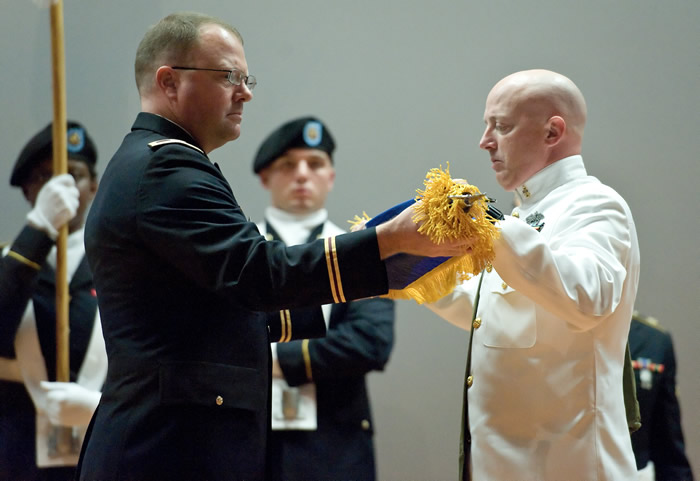USAMRMC Agencies Transition to Defense Health Agency

The National Museum of Health and Medicine and the Armed Forces Medical Examiner System held special ceremonies recognizing their transition from the U.S. Army Medical Research and Materiel Command to the Defense Health Agency Aug. 28 and Aug. 31, respectively.
During the ceremonies, USAMRMC and Fort Detrick Commander Maj. Gen. Brian C. Lein paid tribute to each command's unique history and importance to the Nation.
"While I'm sad, personally, I'm happy, professionally...This is a change for the better," Lein said, during the museum's ceremony Aug. 28 in Silver Spring, Maryland. "Elevating this national, historic landmark up to a DOD level and at an appropriate level to the Defense Health Agency will bring this museum to even further heights. But, please know you will always have an open door at USAMRMC, and you will always have a mission."
Lein's sentiments were no less exemplary during the AFMES transition ceremony held in Dover, Delaware, Aug. 31.
"This organization is truly one of the key organizations within our Department of Defense, for over 50 years it has treated all of our fallen with the utmost of dignity and respect," said Lein. "I don't know of any other organization that has had such a lasting impact on Soldiers, Sailors, Airmen, Marines and their family members than the Armed Forces Medical Examiner System."
AFMES provides worldwide comprehensive medico-legal services and investigations. Board-certified forensic pathologists, forensic anthropologists, medical-legal death investigators and photographers are available 24-hours-a-day to conduct forensic investigations into military deaths throughout the world.
The organizations are now part of DHA, which is a joint, integrated combat support agency that enables the Army, Navy and Air Force medical services to provide a medically ready force and ready medical force to combatant commands in both peacetime and wartime.
These transitions are both part of an overall Army Medicine reorganization. Over the past year, the Army Medical Department Futures Task Force conducted an enterprise-wide analysis and deliberate planning to develop a recommended course to strategically transform the Army Medical Command's organizational structure and health readiness capabilities. The analysis encompassed a review of every level of the MEDCOM, from the headquarters to the installation level, and resulted in the decision to transform the MEDCOM's organizational structure into a more streamlined and efficient organization. By transitioning the agencies to DHA, Army Medicine is enhancing health readiness by strategically transforming its organizational structure to become a more integrated, agile and streamlined organization regionally aligned to support Army Force 2025 and beyond.















